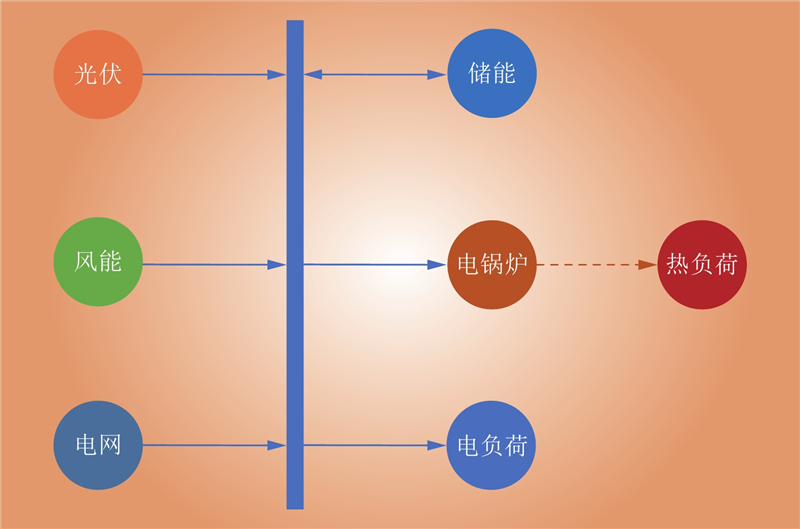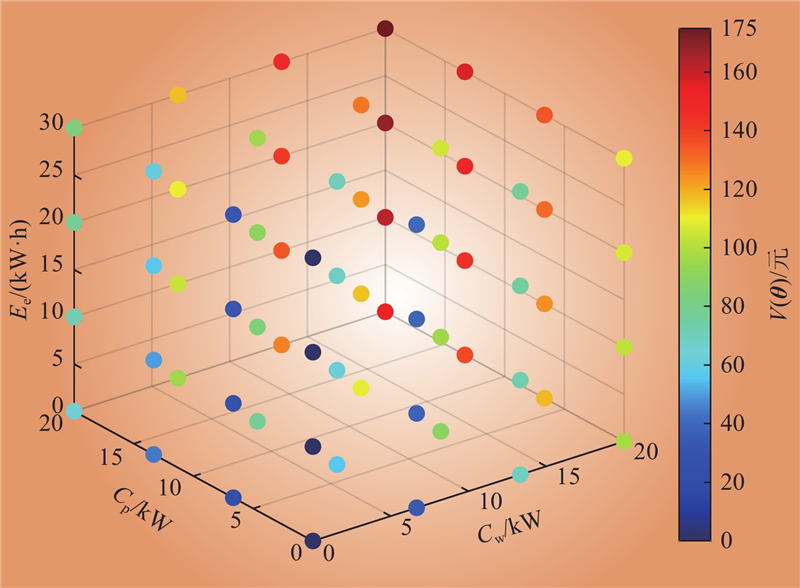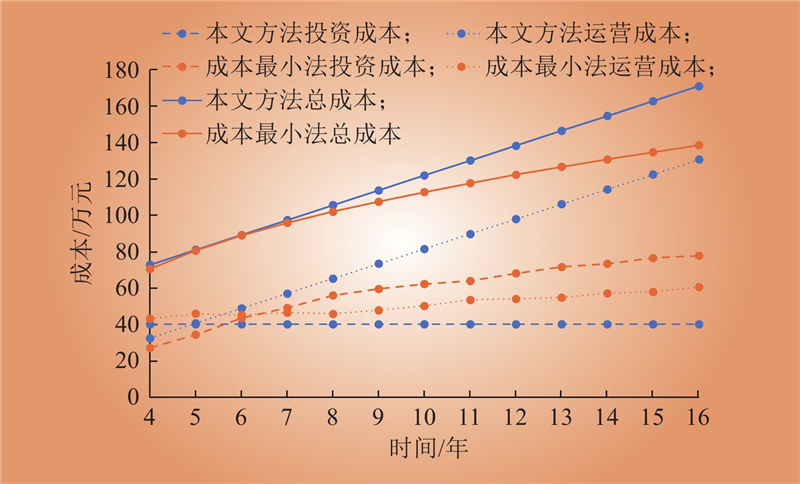| 1 |
陈国平, 董昱, 梁志峰. 能源转型中的中国特色新能源高质量发展分析与思考[J]. 中国电机工程学报, 2020, 40 (17): 5493- 5506.
|
|
CHEN Guoping, DONG Yu, LIANG Zhifeng. Analysis and reflection on high-quality development of new energy with Chinese characteristics in energy transition[J]. Proceedings of the CSEE, 2020, 40 (17): 5493- 5506.
|
| 2 |
姜玲玲, 刘晓龙, 葛琴, 等. 我国能源结构转型趋势与对策研究[J]. 中国能源, 2020, 42 (9): 15- 19,27.
DOI
|
|
JIANG Lingling, LIU Xiaolong, GE Qin, et al. Research on energy structure transition countermeasures in China and its trends[J]. Energy of China, 2020, 42 (9): 15- 19,27.
DOI
|
| 3 |
邹才能, 何东博, 贾成业, 等. 世界能源转型内涵、路径及其对碳中和的意义[J]. 石油学报, 2021, 42 (2): 233- 247.
|
|
ZOU Caineng, HE Dongbo, JIA Chengye, et al. Connotation and pathway of world energy transition and its significance for carbon neutral[J]. Acta Petrolei Sinica, 2021, 42 (2): 233- 247.
|
| 4 |
贺文, 陈珍萍, 胡伏原, 等. 基于一致性的综合能源系统低碳经济调度[J]. 电力系统保护与控制, 2023, 51 (19): 42- 53.
|
|
HE Wen, CHEN Zhenping, HU Fuyuan, et al. Consensus-based low-carbon economic dispatching of integrated energy systems[J]. Power System Protection and Control, 2023, 51 (19): 42- 53.
|
| 5 |
贠保记, 赵文, 王建学, 等. 低碳矿区综合能源系统经济运行优化研究[J]. 电力系统保护与控制, 2024, 52 (6): 177- 187.
|
|
YUN Baoji, ZHAO Wen, WANG Jianxue, et al. Economic operation optimization of an integrated energy system in low carbon mining area[J]. Power System Protection and Control, 2024, 52 (6): 177- 187.
|
| 6 |
王一清, 沙倩, 刘秋林. 区域综合能源系统接入的配电网扩展规划研究[J]. 电力科学与技术学报, 2023, 38 (6): 198- 205.
|
|
WANG Yiqing, SHA Qian, LIU Qiulin. Research on distribution network expansion planning for regionalintegrated energy system access[J]. Journal of Electric Power Science and Technology, 2023, 38 (6): 198- 205.
|
| 7 |
HANNA R, DISFANI V R, HAGHI H V, et al. Improving estimates for reliability and cost in microgrid investment planning models[J]. Journal of Renewable and Sustainable Energy, 2019, 11 (4): 045302.
DOI
|
| 8 |
张利军, 王一铮, 陈飞, 等. 计及能源网络特性的综合能源系统最优协调规划[J]. 电力科学与技术学报, 2020, 35 (1): 3- 13.
|
|
ZHANG Lijun, WANG Yizheng, CHEN Fei, et al. Optimal coordinated planning of an integrated energy system considering characteristics of energy networks[J]. Journal of Electric Power Science and Technology, 2020, 35 (1): 3- 13.
|
| 9 |
曾贤强, 张警卫, 王晓兰. 计及多重不确定性及光热电站参与的区域综合能源系统配置与运行联合优化[J]. 高电压技术, 2023, 49 (1): 353- 363.
|
|
ZENG Xianqiang, ZHANG Jinwei, WANG Xiaolan. Optimal configuration of regional integrated energy system after taking into account multiple uncertainties and the participation of concentrating solar power stations[J]. High Voltage Engineering, 2023, 49 (1): 353- 363.
|
| 10 |
LU S T, GAO H, CHEN L, et al. Capacity planning of park integrated energy system considering carbon market trading[C]//2023 IEEE 7th Conference on Energy Internet and Energy System Integration (EI2). Hangzhou, China. IEEE, 2023: 933–938.
|
| 11 |
林毓军, 苗世洪, 尹斌鑫, 等. 基于改进协同演化算法的综合能源系统经济性与可靠性优化规划[J]. 电力自动化设备, 2021, 41 (9): 173- 181.
|
|
LIN Yujun, MIAO Shihong, YIN Binxin, et al. Optimal planning for economy and reliability of integrated energy system based on improved co-evolution algorithm[J]. Electric Power Automation Equipment, 2021, 41 (9): 173- 181.
|
| 12 |
SHI M S, HUANG Y S. Research on investment planning of power-hydrogen system considering the multi-stakeholder benefit[J]. Renewable Energy, 2022, 199, 1408- 1423.
DOI
|
| 13 |
XIANG Y, CAI H H, GU C H, et al. Cost-benefit analysis of integrated energy system planning considering demand response[J]. Energy, 2020, 192, 116632.
DOI
|
| 14 |
WANG X H, XUE L, WANG Y L, et al. Research on multi-objective planning and optimization of integrated energy system based on economy and environmental protection[J]. E3S Web of Conferences, 2021, 245, 01039.
DOI
|
| 15 |
朱俊铭, 柏晶晶. 基于改进遗传算法的园区综合能源系统规划研究[J]. 电力需求侧管理, 2024, 26 (3): 76- 81.
|
|
ZHU Junming, BAI Jingjing. Research on multi-objective optimal allocation of park integrated energy system based on improved genetic algorithm[J]. Power Demand Side Management, 2024, 26 (3): 76- 81.
|
| 16 |
崔全胜, 白晓民, 董伟杰, 等. 用户侧综合能源系统规划运行联合优化[J]. 中国电机工程学报, 2019, 39 (17): 4967- 4981, 5279.
|
|
CUI Quansheng, BAI Xiaomin, DONG Weijie, et al. Joint optimization of planning and operation in user-side multi-energy systems[J]. Proceedings of the CSEE, 2019, 39 (17): 4967- 4981, 5279.
|
| 17 |
高明非, 韩中合, 赵斌, 等. 区域综合能源系统多类型储能协同优化与运行策略[J]. 中国电力, 2024, 57 (9): 205- 216.
DOI
|
|
GAO Mingfei, HAN Zhonghe, ZHAO Bin, et al. Coordinated optimization and operational strategy for multi-type energy storage in regional integrated energy systems[J]. Electric Power, 2024, 57 (9): 205- 216.
DOI
|
| 18 |
高明非, 张策, 解彤, 等. 考虑风光消纳的综合能源系统多元储能优化配置方法[J]. 动力工程学报, 2023, 43 (6): 796- 804.
|
|
GAO Mingfei, ZHANG Ce, XIE Tong, et al. Multiple energy storage optimal configuration method for comprehensive energy system considering wind/photovoltaic power accommodation[J]. Journal of Chinese Society of Power Engineering, 2023, 43 (6): 796- 804.
|
| 19 |
王永利, 郭璐, 周泯含, 等. 基于定额投资条件下的综合能源系统规划效益研究[J]. 电力需求侧管理, 2020, 22 (5): 38- 44, 57.
DOI
|
|
WANG Yongli, GUO Lu, ZHOU Minhan, et al. Research on integrated energy system planning optimization based on fixed investment[J]. Power Demand Side Management, 2020, 22 (5): 38- 44, 57.
DOI
|
| 20 |
梁涛, 尹晓东, 刘亚祥. 面向投资收益的综合能源系统鲁棒优化配置规划[J]. 中国电力, 2023, 56 (4): 156- 166.
DOI
|
|
LIANG Tao, YIN Xiaodong, LIU Yaxiang. Robust optimal configuration planning of integrated energy system for return on investment[J]. Electric Power, 2023, 56 (4): 156- 166.
DOI
|
| 21 |
李鹏, 吴迪凡, 李雨薇, 等. 基于谈判博弈的多微网综合能源系统多目标联合优化配置[J]. 电网技术, 2020, 44 (10): 3680- 3690.
|
|
LI Peng, WU Difan, LI Yuwei, et al. Multi-objective union optimal configuration strategy for multi-microgrid integrated energy system considering bargaining games[J]. Power System Technology, 2020, 44 (10): 3680- 3690.
|
| 22 |
JIANG Q, JIA H J, MU Y F, et al. Bilateral planning and operation for integrated energy service provider and prosumers-A Nash bargaining-based method[J]. Applied Energy, 2024, 368, 123506.
DOI
|
| 23 |
谭玲玲, 汤伟, 楚冬青, 等. 基于主从博弈的电热氢综合能源系统优化运行[J]. 中国电力, 2024, 57 (9): 136- 145.
|
|
TAN Lingling, TANG Wei, CHU Dongqing, et al. Optimal dispatching of electric-heat-hydrogen integrated energy system based on Stackelberg Game[J]. Electric Power, 2024, 57 (9): 136- 145.
|
| 24 |
WANG H Y, LI K, ZHANG C H, et al. Capacity and operation joint optimization for integrated energy system based on Nash bargaining game[J]. Energy, 2024, 305, 132032.
DOI
|
| 25 |
张干宗. 线性规划[M]. 2版. 武汉: 武汉大学出版社, 2004.
|
| 26 |
闵欣. 线性规划在利润最大化和成本最小化问题中的应用[J]. 黑龙江科技信息, 2013, (21): 125- 126.
|
| 27 |
水电水利规划设计总院. 中国可再生能源发展报告-2022[M]. 北京: 中国水利水电出版社, 2023.
|
| 28 |
张平, 康利斌, 王明菊, 等. 钠离子电池储能技术及经济性分析[J]. 储能科学与技术, 2022, 11 (6): 1892- 1901.
|
|
ZHANG Ping, KANG Libin, WANG Mingju, et al. Technology feasibility and economic analysis of Na-ion battery energy storage[J]. Energy Storage Science and Technology, 2022, 11 (6): 1892- 1901.
|
| 29 |
LUO X, WANG J H, DOONER M, et al. Overview of current development in electrical energy storage technologies and the application potential in power system operation[J]. Applied Energy, 2015, 137, 511- 536.
DOI
|
| 30 |
李建林, 梁策, 张则栋, 等. 新型电力系统下储能政策及商业模式分析[J]. 高压电器, 2023, 59 (7): 104- 116.
|
|
LI Jianlin, LIANG Ce, ZHANG Zedong, et al. Analysis of energy storage policies and business models in new power system[J]. High Voltage Apparatus, 2023, 59 (7): 104- 116.
|







